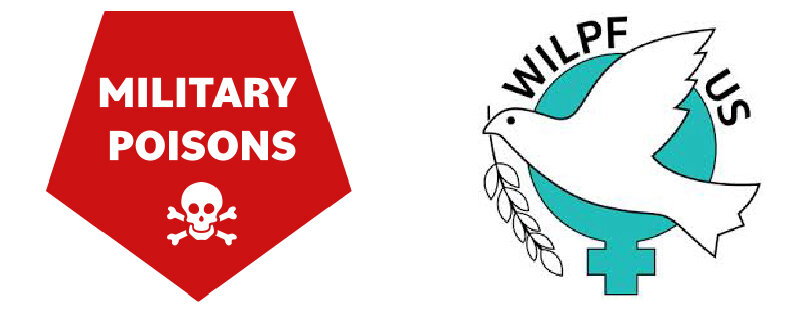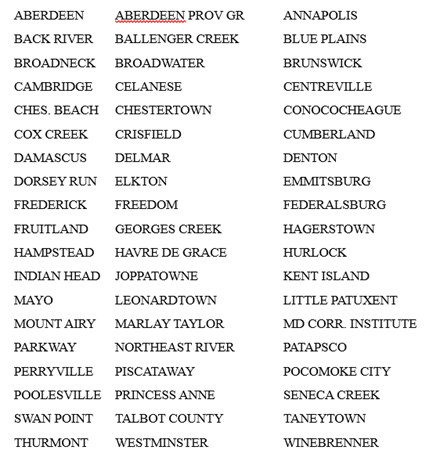Maryland is reluctant to release data on PFAS concentrations in sewer sludge
By Pat Elder
August 16, 2025
Spreading sewer sludge on farm fields poisons crops, animals, and people.
On June 28, 2025, I submitted a Maryland Public Information Act (PIA) request seeking records related to the generation, transport, testing, disposal, and application of sewage sludge in Maryland, with a particular focus on the content of per- and polyfluoroalkyl substances (PFAS).
The Maryland Department of the Environment (MDE) only released a small fraction of the information sought. The state’s limited response raises serious concerns about transparency, accountability, and the extent to which Maryland is willing to confront the widespread contamination of its soils, waters, and food chains by PFAS-laden sludge.
The Maryland Public Information Act (PIA) is Maryland’s version of the federal Freedom of Information Act (FOIA). It gives the public a legal right to obtain copies of government records, including those that cover the management of wastewater treatment facilities. Maryland’s PIA is often considered one of the more open and citizen-friendly public records laws in the U.S., especially because it applies broadly to administrative records and gives the public a clear right to obtain copies.
I asked for a listing of all current and historical Sewage Sludge Utilization (SSU) Permits for all entities involved in:
• Generating, treating, composting, or otherwise processing biosolids;
• Transporting, storing, distributing, or marketing biosolids (in- or out-of-state);
• Applying biosolids to agricultural or marginal land;
• Incinerating biosolids or utilizing them for energy generation;
• Disposal of biosolids in landfills.
I asked for detailed information on each permit holder.
I requested a record of sludge destinations for each of Maryland’s major wastewater treatment plants. See the MDE’s 67 Major Facilities Discharging to the Chesapeake Bay.
I didn’t receive any of it.
I asked the state to furnish PFAS sludge sampling data for the 67 treatment plants dating from January 1, 2024 to the present, covering all Maryland generators, processors, and appliers. This includes testing from:
• Wastewater treatment facilities
• Composting facilities
• Land application sites
• Landfills and incinerators
• Sampling of leachate, effluent, soil additives, or groundwater
I received PFAS data from 12 of the 67 plants:
I received a total of 33 quarterly reports on municipal discharge permits from 12 facilities.
I also asked for a list of all regulatory permits or approvals concerning the importation of biosolids into Maryland from other states. Finally, I asked the state for data showing concentrations of 40 specific PFAS compounds. The Maryland Department of Health Laboratories Administration utilizes the EPA Standard Method 1633 for detection and quantification of 40 PFAS compounds in biosolids, shown below. The state reported on a total of 37 different PFAS compounds for the 12 facilities. We’ll examine the results in a future report.
The chart shows the 40 PFAS compounds detected by EPA Standard Method 1633 used by all states. What’s in your rivers and farm fields?
These 40 PFAS compounds represent .25% of the 16,000 kinds of PFAS known to exist. All PFAS compounds are believed to be harmful.
According to the Potomac Riverkeeper Network, of the 21 wastewater treatment plants that sent sludge to Virginia to be spread on farm fields last year, Maryland analyzed 40 separate PFAS compounds present in the sludge. For all 40 PFAS compounds tested, Maryland’s data showed a range of 48.96 parts per trillion (ppb) to 330.68 ppb with a mean value of 154.82 ppb in the combined total of all 40 PFAS.
The carcinogenic sludge is spread over fields! The chemicals leech into groundwater and surface water, contaminating the earth and everything it sustains. The chemicals never break down. We must tackle this problem, while Maryland is standing in the way.
The Clean Water Act’s biosolids rule places limits on heavy metals and pathogens but says nothing about PFAS, leaving these toxic “forever chemicals” unregulated at the federal level. States can set their own protections, but Maryland’s response has been weak. Military sites continue to release massive volumes of PFAS, yet enforcement is absent. At least six military bases operate their own wastewater treatment plants in Maryland. ( NSA Annapolis, Fort George G. Meade, Fort Detrick, Aberdeen Proving Ground, NSWC Indian Head, Naval Research Laboratory – Chesapeake Bay Detachment ) Some bases, like Joint Base Andrews and Patuxent River Naval Air Station send sewage to adjacent municipalities.
-----------------------------
I received results for NSA Annapolis but not the others. Instead of holding polluters accountable, Maryland has chosen accommodation—protecting the military and industry for the contamination while leaving communities exposed. This is evident in the following chart.
PFOS & PFOA concentrations allowed to be spread in Maryland’s sludge
Ug/kg is micrograms per kilogram, which is the same as parts per billion, or ppb.
The mean concentration across 21 Maryland wastewater treatment facilities was 154.82 parts per billion (ppb) for the combined total of all 40 PFAS compounds. Yet Maryland’s regulatory standard only sets limits for two of them—PFOS and PFOA—allowing sludge containing up to 100 ppb for the total of these two to be spread on agricultural fields. Everything else is fair game.
Every other compound is unregulated. This loophole is particularly troubling because PFOS and PFOA are no longer produced, having been replaced by newer PFAS variants that slip through Maryland’s porous regulatory net. In practice, this means that PFAS contamination in sewage sludge passes without scrutiny, despite mounting scientific evidence that many of these substitute compounds pose similar or even greater risks to human health and the environment.
The Jug Bay Wetlands Sanctuary
Joint Base Andrews discharges its sewage to the Piscataway Water Resource Recovery Facility, the Blue Plains Advanced Wastewater Treatment Plant, and the Western Branch Water Resource Recovery Facility. (WRRF).
The Western Branch WRRF receives wastewater from Joint Base Andrews. The facility discharges into the Patuxent River, right above the Jug Bay Wetlands Sanctuary near the confluence of the Western Branch and the Patuxent River.
I knew these waters 50 years ago when I lived at Lyons Creek on the Patuxent River. Tobacco and slaves were traded here during the colonial period.. In 1814, American Commodore Barney scuttled his fleet just north of Jug Bay in front of the advancing British during the war of 1812. The same British force marched on to burn Washington.
Jug Bay, Lyons Creek, Shores of Calvert, Yellow Bank, what’s in your fish?
Following is a sample of PFAS concentrations in sewer sludge from the Western Branch WRRF:
Testing Analysis of PFAS – Water and Science Administration, Maryland Department of the Environment – Western Branch WRRF – April 23, 2025
The Maryland Department of the Environment reported 49.01 ppb of PFAS from 12 compounds at the Western Branch Water Resource Recovery Facility in Upper Marlboro. PFOA and PFOS together contained 8.11 ppb, or 16.5% of the total. Because the 8.11 ppb concentration is less than the 20 ppb threshold, the sludge may be spread freely. Meanwhile, the other chemicals, like 5:3 FTCA, at 25 ppb, may also be spread freely.
5:3 FTCA can degrade into more well-studied compounds like PFOA. Exposure may therefore be associated with liver effects, endocrine disruption, developmental effects, and immune system suppression. 5:3 FTCA has been detected in fish, especially near military sources.
Maryland’s PFAS in sludge rule accomplishes nothing.
I have not received results of any testing from the wastewater facilities in Maryland shown here.
A national study by the Waterkeeper Alliance showed elevated levels of the deadly PFAS carcinogens were found at 95% of sampled sites downstream from wastewater treatment plants.
Please help us with environmental testing at Fort Ord.
A prescribed burn is ignited at the former Fort Ord to facilitate the removal of unexploded ordnance (UXO) before new housing is developed. What could go wrong?
We hope to perform environmental testing at Fort Ord, California in early October, 2025.
At this point, we will purchase:
25 PFAS water test kits ($1,750),
20 VOC badges-some of which can go inside and some outside ($2,500),
10 TCE/PCE/CT and other VOC water test kits ($2,390),
20 individual TCE and PCE kits ($900),
10 CT kits ($600), for a total of $8,150.
Please help us! This is important work. Click here:
https://worldbeyondwar.org/support-military-poisons/









